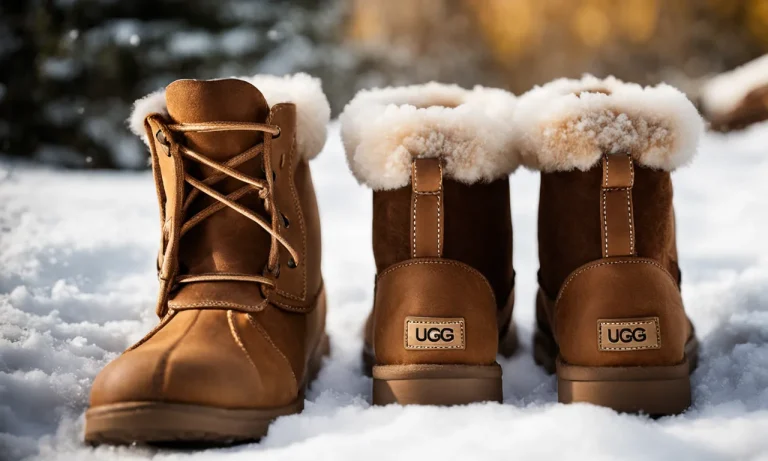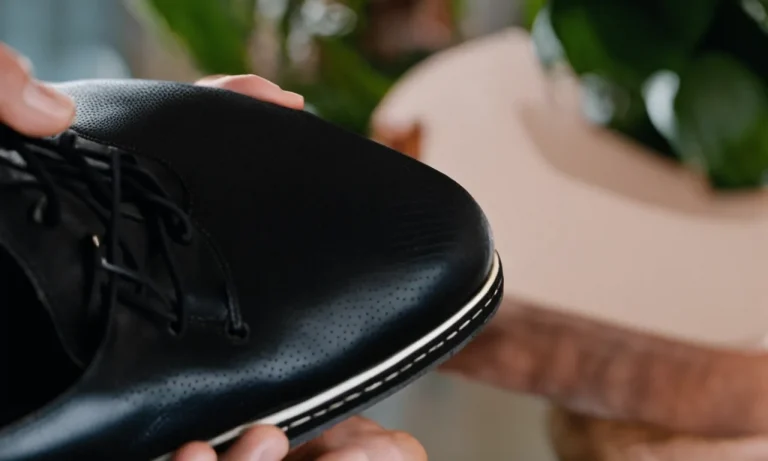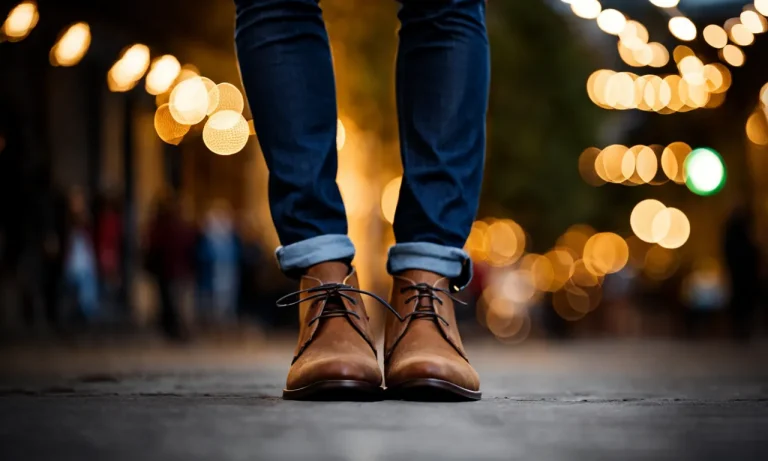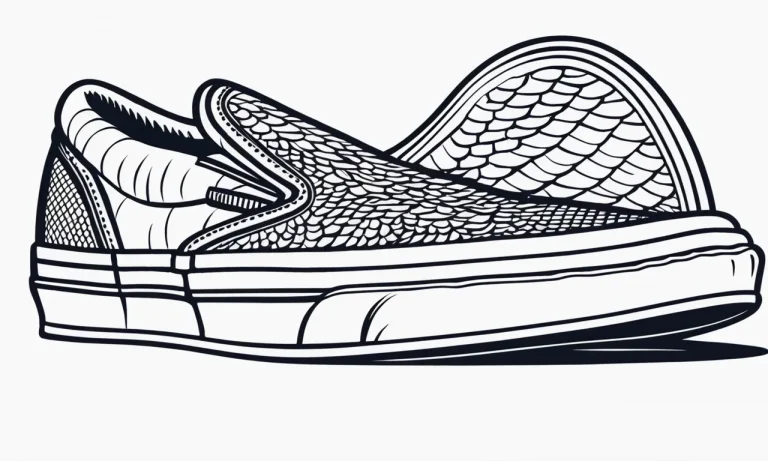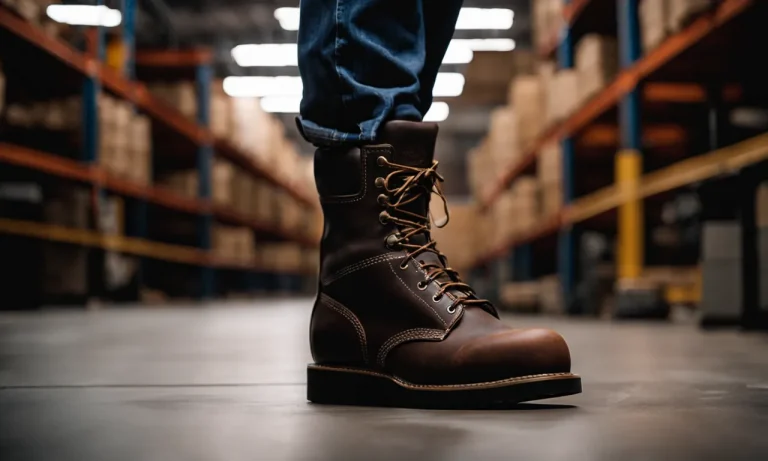Shoes may seem simple, but they are made up of many different parts that serve important purposes. Whether you are an avid shoe lover or just want to know more about what goes into making a shoe, understanding the anatomy of a shoe is useful knowledge to have.
If you’re short on time, here’s a quick answer to your question: Shoes are composed of the upper, sole, insole, outsole, heel, shank, welt, eyelets, tongue, laces, toe box, toe cap, vamp, quarters, collar, foxing, midsole, and more.
In this comprehensive guide, we will explore the main structural elements of a shoe and explain the role each part plays. You’ll learn shoe terminology and labels for the various components. We’ll also overview how the parts are constructed and work together to create a functional and comfortable shoe.
The Upper
The upper is the part of the shoe that covers the top of the foot. It plays a crucial role in providing comfort, support, and protection. The upper is typically made from a variety of materials such as leather, synthetic materials, or a combination of both.
Different parts of the upper serve different purposes, contributing to the overall functionality and style of the shoe.
Vamp
The vamp is the front part of the upper that covers the top of the toes. It is responsible for protecting the toes from impact and providing a secure fit. The vamp can be made of a single piece of material or multiple panels stitched together.
The design of the vamp can vary depending on the style and purpose of the shoe.
Quarters
The quarters are the parts of the upper that wrap around the sides and back of the foot. They provide stability and support to the foot, preventing it from sliding inside the shoe. The quarters can be made from flexible materials to ensure a comfortable fit, or they can be reinforced with additional padding or overlays for added support.
Collar
The collar is the part of the upper that surrounds the top of the heel. It helps to cushion and support the ankle, providing comfort and preventing the shoe from rubbing against the skin. The collar may be padded or lined with a soft material to enhance comfort and reduce friction.
Tongue
The tongue is a flap of material that sits between the vamp and the quarters. It helps to protect the foot from the pressure of the laces and provides additional padding and comfort. The tongue may be attached to the upper on one side or be a separate piece that can move freely.
Eyelets and Laces
The eyelets are small holes or rings on the upper through which the laces are threaded. They allow for easy adjustability and secure the shoe firmly around the foot. The laces are used to tighten or loosen the shoe according to the wearer’s preference.
Different lacing techniques can also provide customized fit and support.
Toe Box
The toe box is the front part of the upper that surrounds the toes. It provides space and protection for the toes to move comfortably. A roomy toe box is particularly important for individuals with wider feet or conditions such as bunions.
A narrow toe box, on the other hand, can cause discomfort and restrict foot movement.
Toe Cap
The toe cap is a reinforcement added to the toe box to provide extra protection and durability. It is often made of a hard material like rubber or plastic to shield the toes from impact or abrasion. Toe caps are commonly found in work boots, hiking shoes, and other footwear designed for rugged activities.
Understanding the different parts of the upper can help you make informed decisions when choosing the right shoe for your needs. Whether you’re looking for a running shoe that offers maximum support or a stylish dress shoe that keeps you comfortable all day, the design and construction of the upper play a crucial role in the overall performance and fit of the shoe.
The Sole
When it comes to understanding the anatomy of a shoe, the sole is one of the most crucial parts. It is the foundation of the shoe that provides support and protection to the wearer’s feet. The sole is responsible for absorbing impact and providing traction on various surfaces.
Let’s delve into the different components of the sole:
Outsole
The outsole is the bottom part of the sole that comes in direct contact with the ground. It is typically made of durable and slip-resistant materials such as rubber or polyurethane. The design and pattern of the outsole determine the shoe’s grip and traction.
Some outsoles are specifically designed for specific activities like running or hiking, while others are more versatile for everyday use.
Midsole
The midsole is the layer between the outsole and the upper part of the shoe. It plays a crucial role in providing cushioning and support to the wearer’s foot. The midsole is usually made of materials like EVA (ethylene-vinyl acetate) or PU (polyurethane) foam.
These materials are lightweight and have excellent shock-absorbing properties, which helps reduce the impact on the feet and joints during walking or running.
Insole
The insole, also known as the footbed or inner sole, is the part of the shoe where your foot rests. It is typically removable and can be replaced with orthotic inserts for additional comfort or support. The insole provides extra cushioning and arch support, enhancing the overall comfort of the shoe.
Some insoles are also designed to wick away moisture and odor, keeping your feet fresh and dry throughout the day.
Shank
The shank is a thin, rigid piece of material that is inserted between the outsole and the midsole. It provides stability and support to the arch of the foot. The shank helps prevent the shoe from bending excessively, especially in the middle portion.
It is commonly made of steel, fiberglass, or nylon, depending on the type of shoe and its intended purpose.
Welt
The welt is a strip of material that connects the upper part of the shoe to the sole. It is typically stitched or glued to provide durability and strength. The welt also acts as a barrier against water and debris, keeping your feet dry and protected.
In some high-quality shoes, the welt is visible on the outside, adding a touch of style and craftsmanship.
Understanding the different parts of the sole will not only help you make informed decisions when purchasing shoes but also enable you to appreciate the intricate design and engineering that goes into creating comfortable and functional footwear.
The Heel
The heel is an essential part of any shoe, providing support, stability, and style. It is located at the back of the shoe and plays a crucial role in balancing the weight of the wearer. Let’s explore the different components that make up the heel of a shoe.
Heel Counter
The heel counter is a stiff piece of material that is inserted at the back of the shoe to provide structure and support to the heel area. It helps to prevent the shoe from collapsing inward and provides stability to the foot.
The heel counter is usually made of plastic, leather, or a combination of both. It is designed to keep the foot in place and prevent excessive movement, reducing the risk of injury.
Heel Breast
The heel breast refers to the curved part of the heel that comes in contact with the ground. It is important for providing traction and stability while walking or running. The angle and shape of the heel breast can vary depending on the type of shoe and its intended use.
For example, high-heeled shoes often have a more pronounced curve to create a sleek and elegant look, while athletic shoes may have a flatter heel breast for better stability and shock absorption.
Heel Base
The heel base is the widest part of the heel, providing a solid foundation for the shoe. It helps to distribute the weight of the wearer evenly and prevents the shoe from tipping over. The size and shape of the heel base can vary depending on the design of the shoe.
A wider heel base offers more stability, making it ideal for those who need extra support or spend long hours on their feet.
Heel Lifts
Heel lifts are inserts that can be added to the shoe to increase the height of the heel. They are commonly used in women’s shoes to create a more flattering silhouette and give the illusion of longer legs.
Heel lifts can also provide cushioning and reduce the impact on the feet and joints, making them a popular choice for those who want to add some extra comfort to their shoes.
Understanding the different components of the heel can help you make informed decisions when choosing the right pair of shoes. Whether you’re looking for style, comfort, or functionality, a well-designed heel can make all the difference in your overall shoe experience.
Other Parts
Foxing
One of the lesser-known parts of a shoe is the foxing. The foxing is a strip of material that runs along the sides of the shoe, between the sole and the upper. It is often made of rubber or other durable materials to provide extra protection and support for the shoe.
The foxing not only adds strength to the shoe, but it also helps to prevent wear and tear on the upper. This is especially important for shoes that are meant to be worn in rugged or outdoor environments.
Facing
The facing of a shoe refers to the part of the upper that covers the front of the foot. It is often made of the same material as the rest of the upper, but it can also be made of a different material for added style or functionality.
The facing plays an important role in the overall fit of the shoe, as it helps to keep the foot securely in place. It is often attached to the vamp, which is the part of the upper that covers the toe area.
The facing can be adjusted using laces or other fastening mechanisms to achieve a snug and comfortable fit.
Throat
The throat of a shoe is the part that surrounds the opening where the foot is inserted. It is typically located between the facing and the tongue. The throat can vary in width and shape depending on the style of the shoe.
For example, a shoe with a low-cut throat will have a wider opening, while a shoe with a high-cut throat will have a narrower opening. The throat plays a crucial role in determining how easy it is to put on and take off the shoe, as well as how secure it feels on the foot.
Backstay
The backstay is a strip of material that runs along the back of the shoe, from the heel to the ankle. It provides structural support and helps to maintain the shape of the shoe. The backstay also helps to prevent the shoe from collapsing when the foot is inserted.
It is often reinforced with additional layers of material or stitching to ensure durability. The backstay is particularly important for shoes that require a snug fit, such as athletic shoes or boots.
Gussets
Gussets are small pieces of material that are inserted into the sides or tongue of a shoe to provide additional flexibility and comfort. They are often made of elastic or other stretchy materials to allow for easy movement of the foot.
Gussets can be found in various types of shoes, including slip-on styles and shoes with adjustable closures. They help to accommodate different foot shapes and sizes, and can also enhance the overall fit and feel of the shoe.
Understanding the various parts of a shoe is not only interesting, but it can also help you make more informed choices when it comes to selecting the right pair for your needs. Whether you’re a shoe enthusiast or simply curious about what goes into the making of a shoe, knowing about the foxing, facing, throat, backstay, and gussets will give you a deeper appreciation for the craftsmanship and design that goes into each pair.
Conclusion
As you can see, even simple shoes contain a surprising number of parts. Each component has an important structural or functional role to play. Understanding the anatomy of a shoe gives you an appreciation for the craftsmanship and engineering that goes into quality footwear.
The next time you tie up your sneakers or slip on a pair of oxfords, you’ll have the vocabulary to identify all the elements that make up the shoe. Knowing the parts of a shoe can help you make informed choices when shopping for new shoes and take better care of the shoes you already own.


